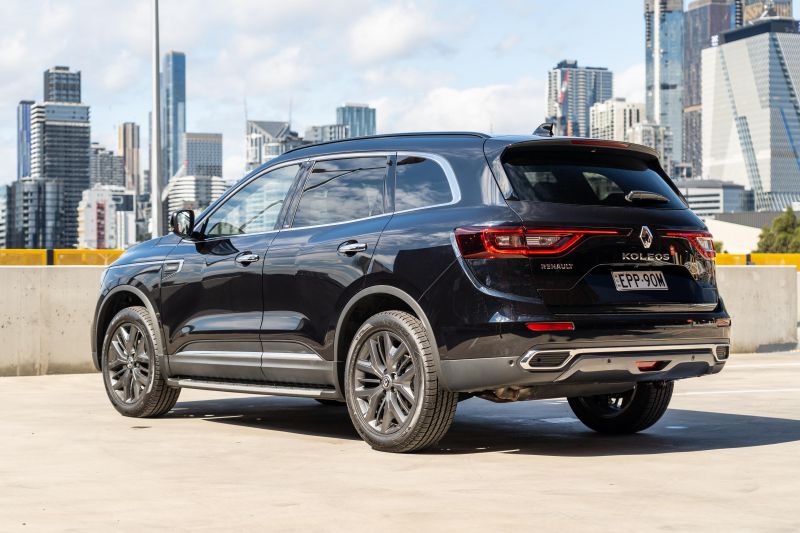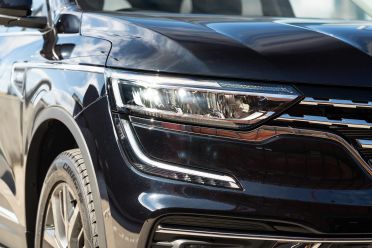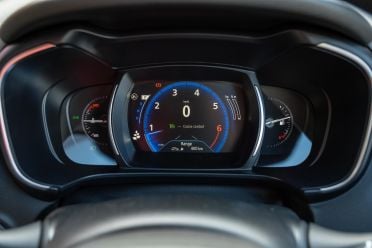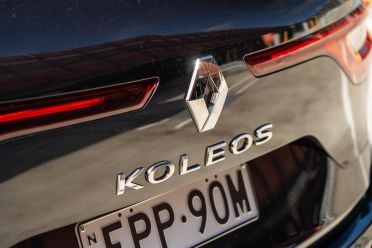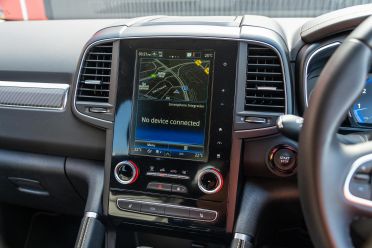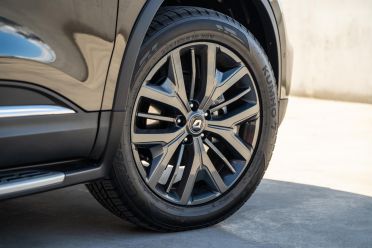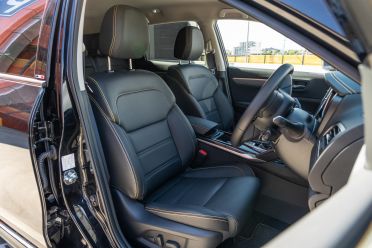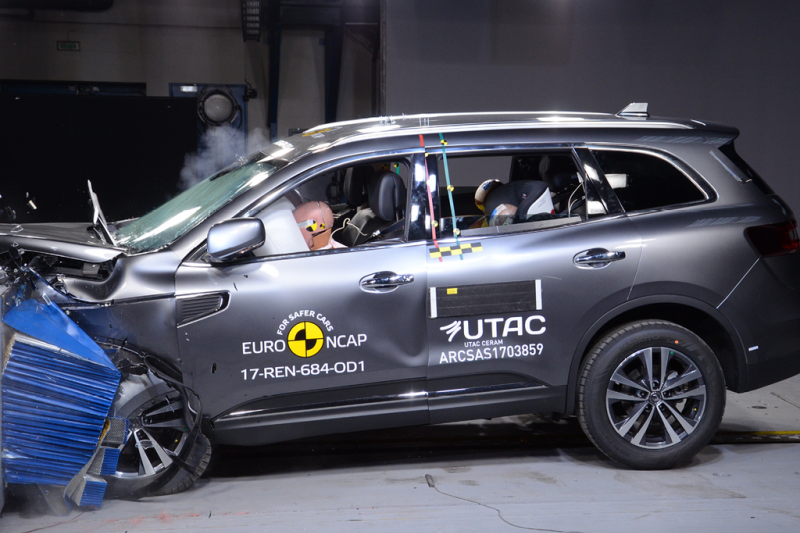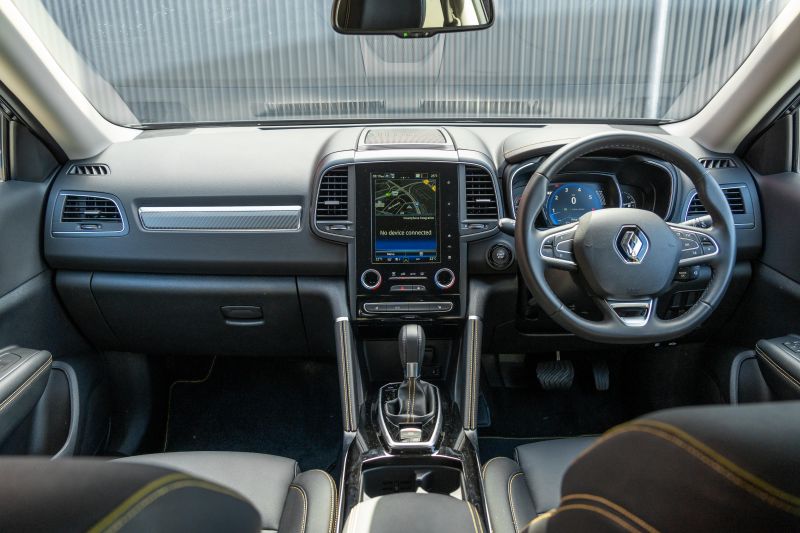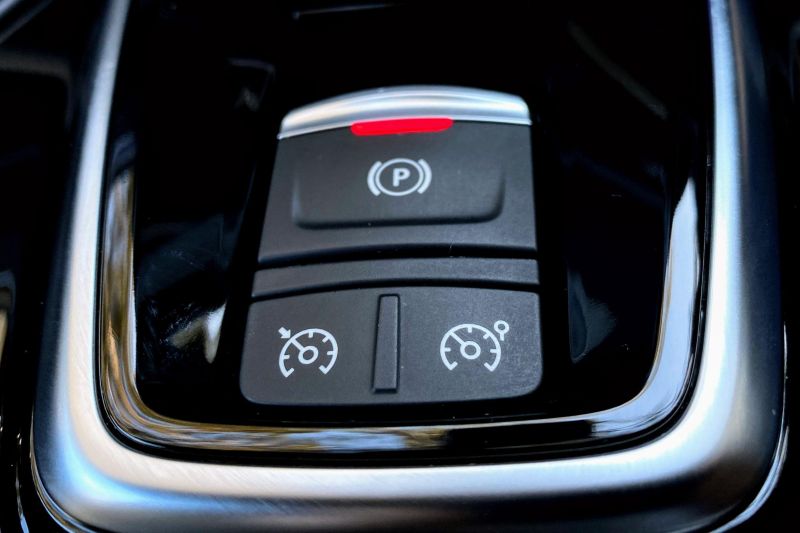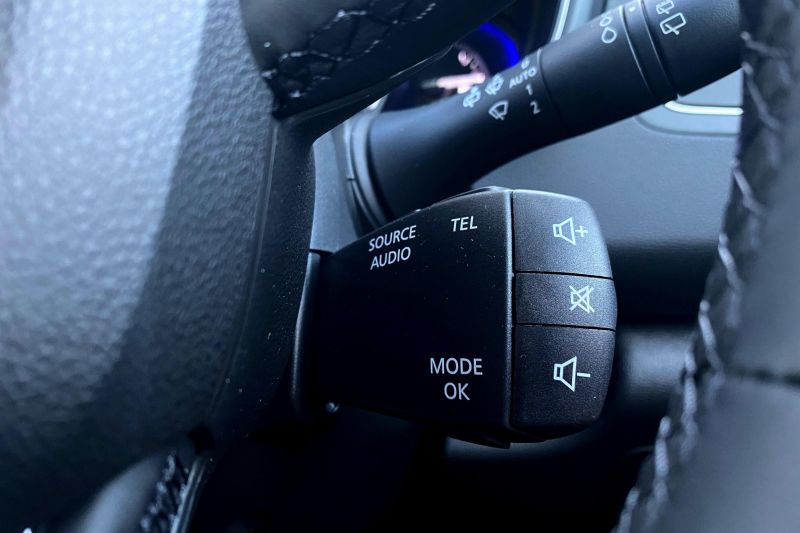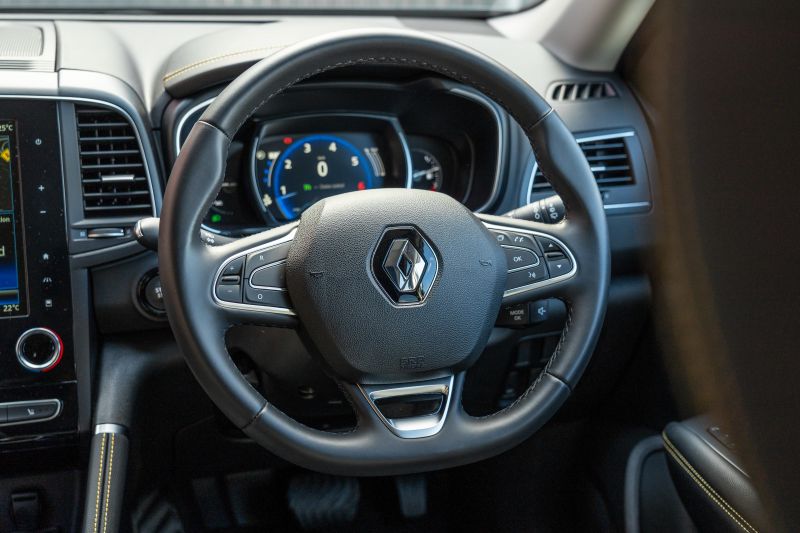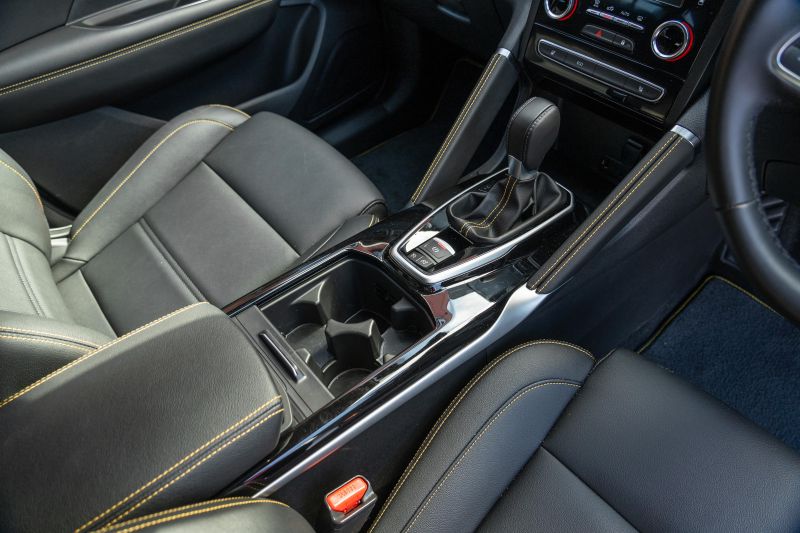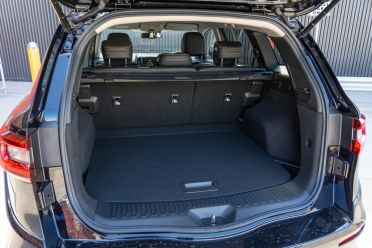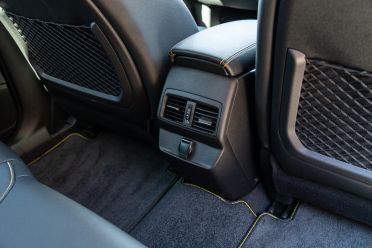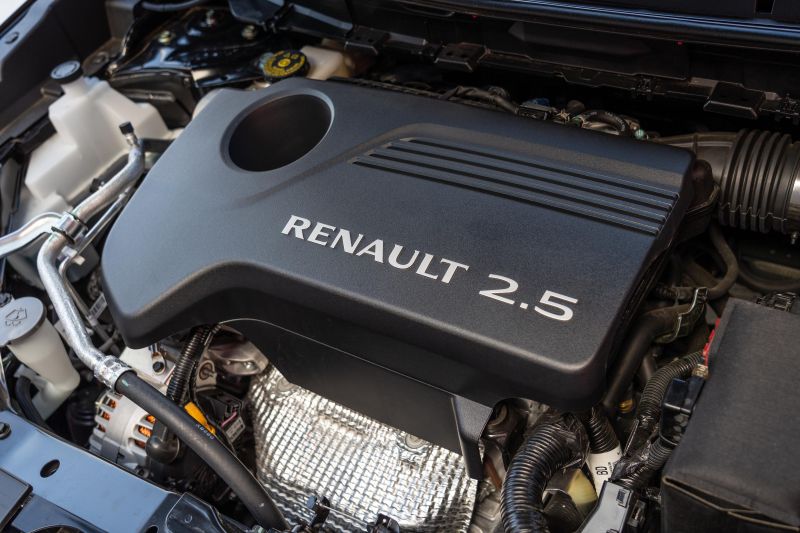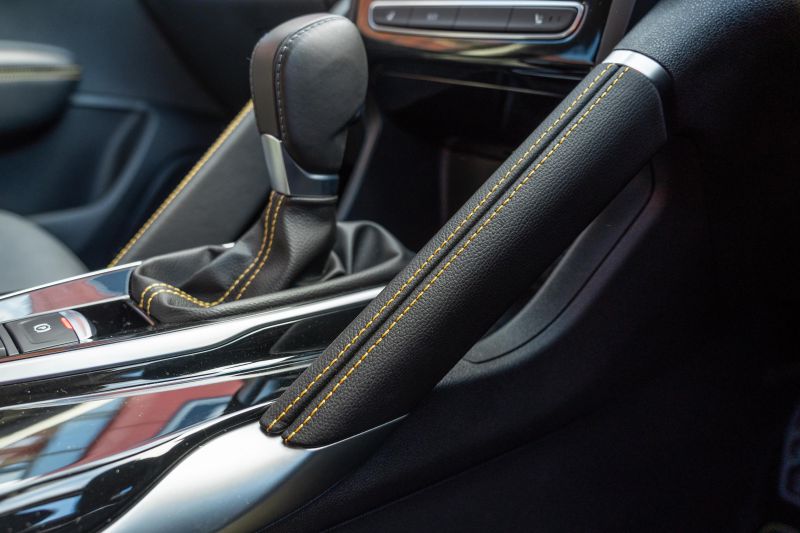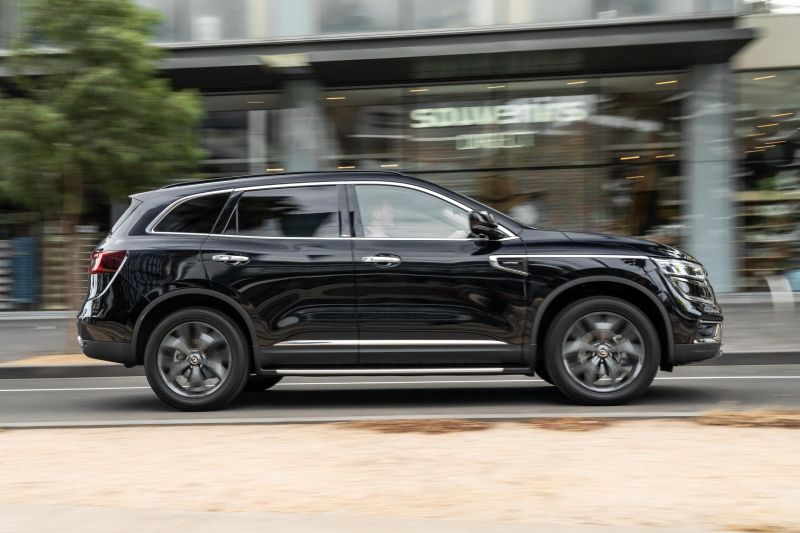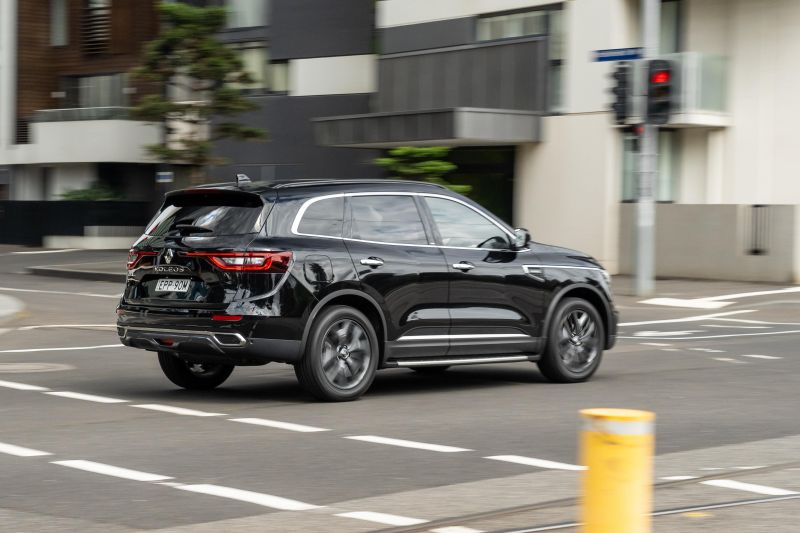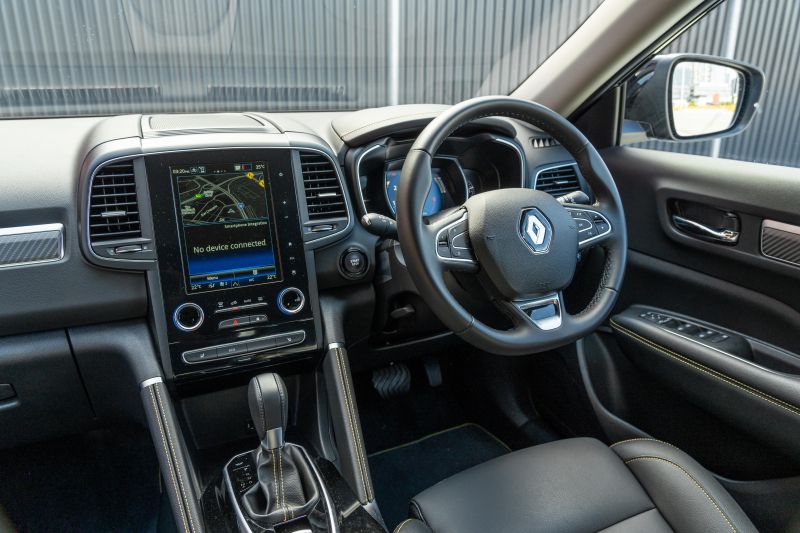The Renault Koleos, which shares its bones with the better-known Nissan X-Trail, can be forgotten amongst myriad medium SUV rivals.
These include household names such as the Toyota RAV4, Mazda CX-5, Mitsubishi Outlander, Hyundai Tucson, Kia Sportage, and the aforementioned Nissan.
Its appeal lies in being a European-branded, roomy SUV with reasonable pricing. Much of that is down to the fact it’s built on a Renault-Nissan platform shared with the X-Trail, and made in South Korea.
Launched in 2016, it’s not the newest contender. Not that it seems to be hurting sales, which sit at 818 to the end of February – the most for any year since it went on sale.
While design is subjective, I also reckon it looks great, and will fool many people into thinking you’ve bought something more expensive. Its rear light signature in particular really appeals to my sensibility, ditto the solid steps and French Tricolore flag on the B-pillars.
Time for a revisit.

How much does the Renault Koleos cost?
This special Renault Koleos Black Edition on test is limited to 400 units, and costs $42,000 drive-away – thereabouts with a RAV4 GXL, CX-5 Maxx Sport, Outlander LS, or X-Trail ST-L.
That puts it between the Koleos Zen and Koleos Intens grades. In fact, it’s a no-brainer over the Zen if you can get your hands on one.
2022 Renault Koleos pricing:
- Renault Koleos Life: $33,590 ($37,820 drive-away)
- Renault Koleos Zen: $37,390 ($41,779 drive-away)
- Renault Koleos Black Edition: $40,090 ($42,000 drive-away)
- Renault Koleos Intens: $43,890 (48,548 drive-away)
- Renault Koleos Intens AWD: $46,390 ($51,157 drive-away)
All prices exclude on-road costs, with drive-away pricing in brackets based on a 3000 postcode
What do you get?
Koleos Life highlights:
- 17-inch alloy wheels
- 17-inch steel spare
- LED headlights and DRLs
- Dusk-sensing headlights
- Proximity key, auto ‘walk away’ locking
- Rain-sensing wipers
- Rear parking sensors
- Cloth seats
- Dual-zone climate control
- Button start
- Front LED interior lighting
- 7.0-inch landscape touchscreen
- 2 x USB and 3 x 12V points
- Apple CarPlay and Android Auto (wired)
- Arkamys eight-speaker sound system
- Bluetooth, AM, FM, digital radio
- Heated and cooled front cupholders
Koleos Zen adds:
- Auto-folding side mirrors
- 18-inch alloy wheels
- Front parking sensors
- Rear privacy glass
- Faux leather seats
- Heated front seats
- Powered driver’s seat
- Satellite navigation
- Blind-spot monitoring
- Auto-dimming rear mirror
- Rear LED reading lights
The Easy Life Package ($2000) for the Zen adds:
Koleos Black Edition adds:
- 19-inch alloy wheels
- Hands-free power tailgate
- Black roof rails, door mirrors
- Grey skid plates
- Unique badging
- Matte carbon-look cabin trims
- 8.7-inch portrait-oriented touchscreen
- Black faux leather seats
- Yellow interior stitchwork
Koleos Intens adds:
- 4×4 option
- Sweeping rear indicators, LED reversing lights
- Panoramic sunroof
- Parking assistance system
- Side-mirror tilt in reverse
- 2 x rear USB ports
- Nappa leather seats
- Ventilated front seats
- Power driver’s seat with massaging and memory
- Power passenger’s seat
- Bose 11-speaker premium sound system
- Ambient lighting, customisable
- Removes yellow interior stitchwork
- Removes matte carbon-look cabin trim
MORE: 2022 Renault Koleos price and specs
Is the Renault Koleos safe?
The Renault Koleos range has a five-star ANCAP rating, albeit one with an older 2017 date stamp.
It achieved 84 per cent for adult occupant protection, 79 per cent for child occupant protection, 62 per cent for pedestrian-friendliness, and 52 per cent for safety assist features.
Standard safety features include:
- Dual front airbags
- Dual front-side airbags
- Front and rear curtain airbags
- 3 x top tethers, 2 x ISOFIX points
- Rear-view camera with guidelines
- Front and rear parking sensors
- Autonomous emergency braking – interurban
- Forward-collision warning
- Lane departure warning
- Blind-spot monitoring
- Cruise control with speed limiter
- Dusk-sensing headlights
- Tyre-pressure monitor
Common features not found here include adaptive cruise control, lane-keep assist with steering overrides, or rear-cross traffic assist. Nor is there an increasingly common front-centre airbag which is a requirement for a five-star ANCAP safety rating against the latest crash-testing criteria.
What is the Renault Koleos like on the inside?
There’s some nice detailing in this special edition, headlined by the faux carbon-fibre door and dash trims, and bright yellow stitching on various touchpoints and the centre-tunnel grab handles. The switchgear is bespoke too, rather than being pilfered from Nissan.
The front seats are stylish and well-bolstered, and offer a nice and high driving position with plenty of adjustment. I also really liked the digitised instrument cluster, which has several different display modes and five luminous colour choices.
It doesn’t offer 3D mapping (like a Mitsubishi Outlander) or camera displays (like a Kia Sportage), but it’s aesthetic and legible. The cluster uses analogue gauges for the temperature and fuel levels while a small central display will show you speed, RPM and vehicle data.
Infotainment comes via the unusual portrait-oriented touchscreen which allows full-screen phone mirroring (vertical Apple CarPlay in my case) and is particularly effective when using mapping. You can also change the colour schemes to alter the ambience.
The R-Link 2 infotainment system is intuitive and easy to navigate. One wouldn’t call the design sexy, but it’s functional. The on-screen buttons are big enough for the largest fingers and there aren’t too many layers or endless sub-menus to get lost in.
Touchpoints down the side take you straight to various menus, and while it’s not the quickest-loading or most responsive unit out there, I found it easy to operate and read. This shape of touchscreen, embraced by the likes of Volvo and Mercedes-Benz, ought to be common.
The reversing camera display only takes up half the screen, however, and I’d prefer a proper volume knob. And there are some French quirks that require adjusting to.
On the steering wheel, two buttons on the left spoke are available labeled ‘R’ and ‘O’ suggesting… what? It turns out these buttons are for the cruise control, if it’s activated. The button to engage it in the first place is behind the handbrake lever near the centre console.
If you’re looking for the volume or media controls, you need to reach behind the wheel and feel for a stubby bar. Here is where you memorise and control the volume, audio mode and track selection. When parked, you can turn the wheel to get a peek of this control arm.
Below the screen sit air-conditioning control buttons and dials to shortcut the temperature or recirculation settings, though if you want to change more detailed stuff such as fan direction and intensity you need to do that through a touchscreen menu.
Storage options are great. There are four various-size (sliding-covered) cupholders ahead of a large centre console, a deep cubby below the centre display (albeit with no wireless charge pad), a good glovebox, a sunglasses cubby, and bottle-ready door bins.
The non-sliding back seats are really comfortable and supportive, and offer acres of headroom and legroom for my 194cm frame even with the front seat all the way back. It’s just about the best in the business at this.
The rear seatbacks recline, the floor is nearly flat, and occupants have their own vents, centre cupholder-armrest, and a 12V socket ready for a USB adaptor.
The related Nissan X-Trail and the newer Mitsubishi Outlander come with available third-row seats, which impact on middle-row space at times because the centre bench needs to sit higher, and be limited in how much they can be set back. Not an issue here in the Renault.
Some might bemoan the lack of sixth and seventh seats, however.
The tailgate is powered, and the boot has a removable cargo cover with a rigid bar. However, this cannot be stored under the loading for due to the full-size spare tyre with steel wheel.
Boot space with all five seats in use maxes out at 458 litres, climbing to 1690L with the rear seats folded flat.
What’s under the bonnet?
All versions of the Koleos use the same engine: a 2.5-litre four-cylinder petrol producing 126kW of power at 6000rpm and 226Nm at 4400rpm (it’s 126kW/233Nm in the X-Trail).
The engine is mated to an ‘X-tronic’ CVT automatic, and as tested came as a front-wheel drive. There is an on-demand all-wheel drive (AWD) option, but only for the flagship Koleos Intens.
Zero to 100km/h takes a leisurely 9.5 seconds, accompanied by a flaring CVT and an engine that sounds a little strained under a stomped throttle.
However fuel consumption proved better than expected – the official figure is 8.1 litres per 100km, dropping to 6.7L/100km on on the highway. On a long road trip I saw an indicated figure as low as 6.6L/100km at times, averaging out at 8.5L/100km.
It runs on 91 RON regular unleaded and has a 60L tank. Braked-trailer towing capacity is 2000kg.
There’s also a dedicated eco section in the infotainment system, with a tree branch symbol in the instrument cluster that loses its leaves if you’re heavy footed. On the main display you’ll be able to view information about your gas guzzling behaviour and see a score.
How does the Renault Koleos drive?
The Koleos ticks the boxes when it comes to offering a high seating position coupled by good outboard visibility and light, low-resistance steering.
The naturally-aspirated engine works well in stop/start urban driving, with immediate response to throttle inputs and good levels of refinement.
Ask for a little more oomph, though, and the engine piles on the revs as the CVT flares, and refinement (noise, vibration and harshness suppression) dips.
It’s not like it’s a slug, but the Koleos’ drivetrain doesn’t have motoring enthusiasts as its focus. That’s fine, but just be aware.
It uses MacPherson strut front and multi-link rear suspension, and while it’s not the most nimble or wieldy offering around, it feels solid and stable.
The Black Edition is front-drive only, but the top-spec Intens can be had with on-demand AWD and a locking fixed-torque mode, plus hill-descent control.
The main dynamic gripe is the ride quality which, through a combination of low-profile tyres, large wheels and passive damping, feels a little jittery and unsettled over expansion joints, sharp potholes and the like.
This is important, because the interior is otherwise commendably comfortable. The X-Trail shares both traits, as does the new Outlander. We should note the Koleos Zen and Life with a touch more tyre sidewall should (and do) ride more comfortably.
In terms of active safety, adaptive cruise control feels like a big omission, and while I personally quite liked the audible lane departure alert, it really should offer the option of steering assist to keep up with the Joneses.
How much does the Renault Koleos cost to run?
Renault Australia provides a five-year, unlimited kilometre warranty.
Servicing intervals are much longer than average in terms of distance, at 12 months or 30,000km a pop, which will suit those who drive high average miles.
Five services come with capped pricing, currently advertised at $429, $429, $429, $999, and $429 ($2715 total) for the first five dealer visits.
The X-Trail, which uses the same engine, has 10,000km intervals. Go figure… On the plus side, the Nissan’s first five services all up are capped at an advertised $1642.
CarExpert’s Take on the Renault Koleos
The Koleos Black Edition stacks up relatively well, and left me pleasantly surprised.
Granted it misses a few active safety features, and has a pretty bland petrol-CVT drivetrain. Plus, the ride quality and NVH suppression could be better around town.
But you need to balance that with the Renault’s chic design, nice-looking displays, huge back seats, and reasonable pricing.
Class-leader? No. But if it’s maligned, it would be unfairly so.
Click the images for the full gallery





